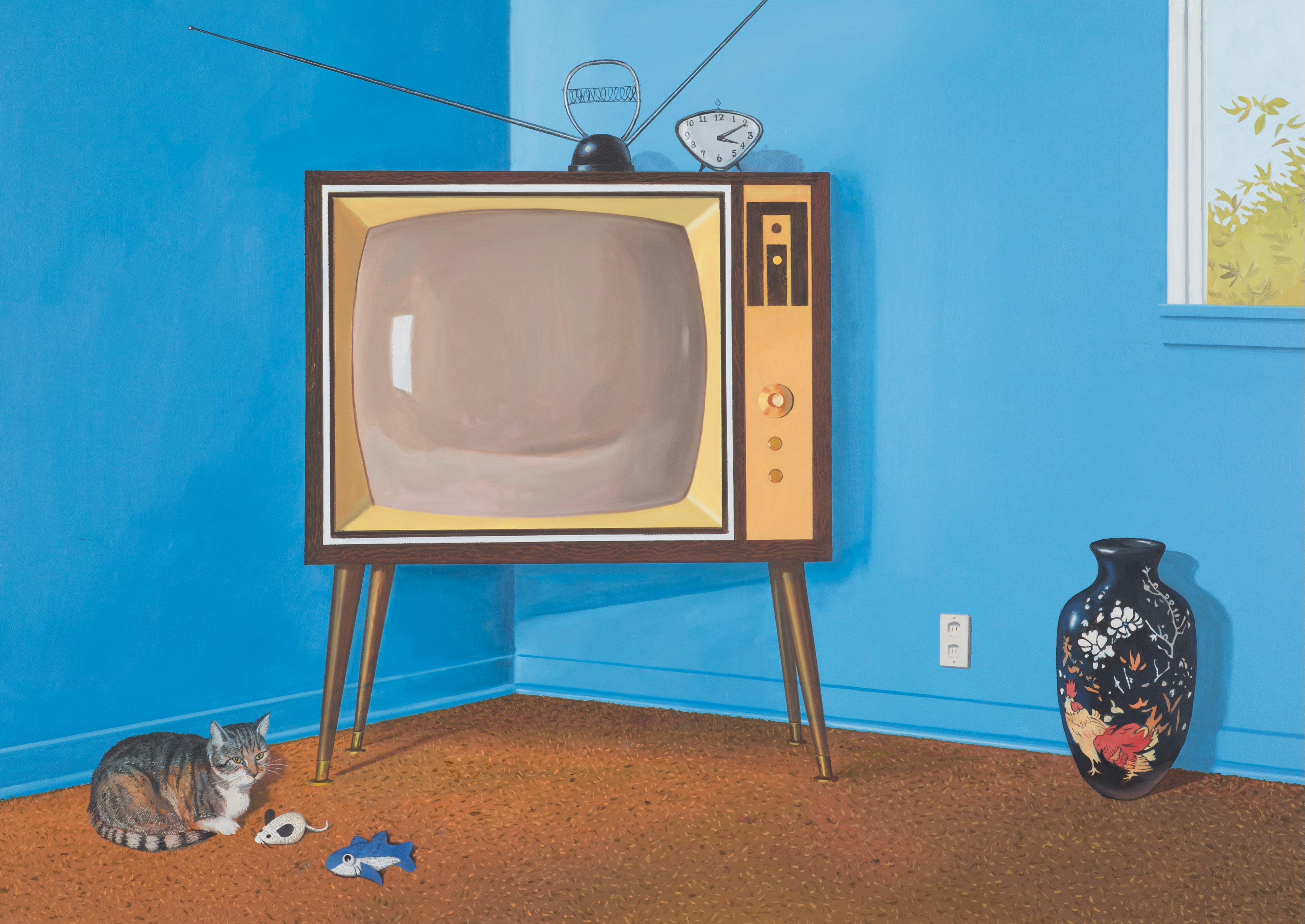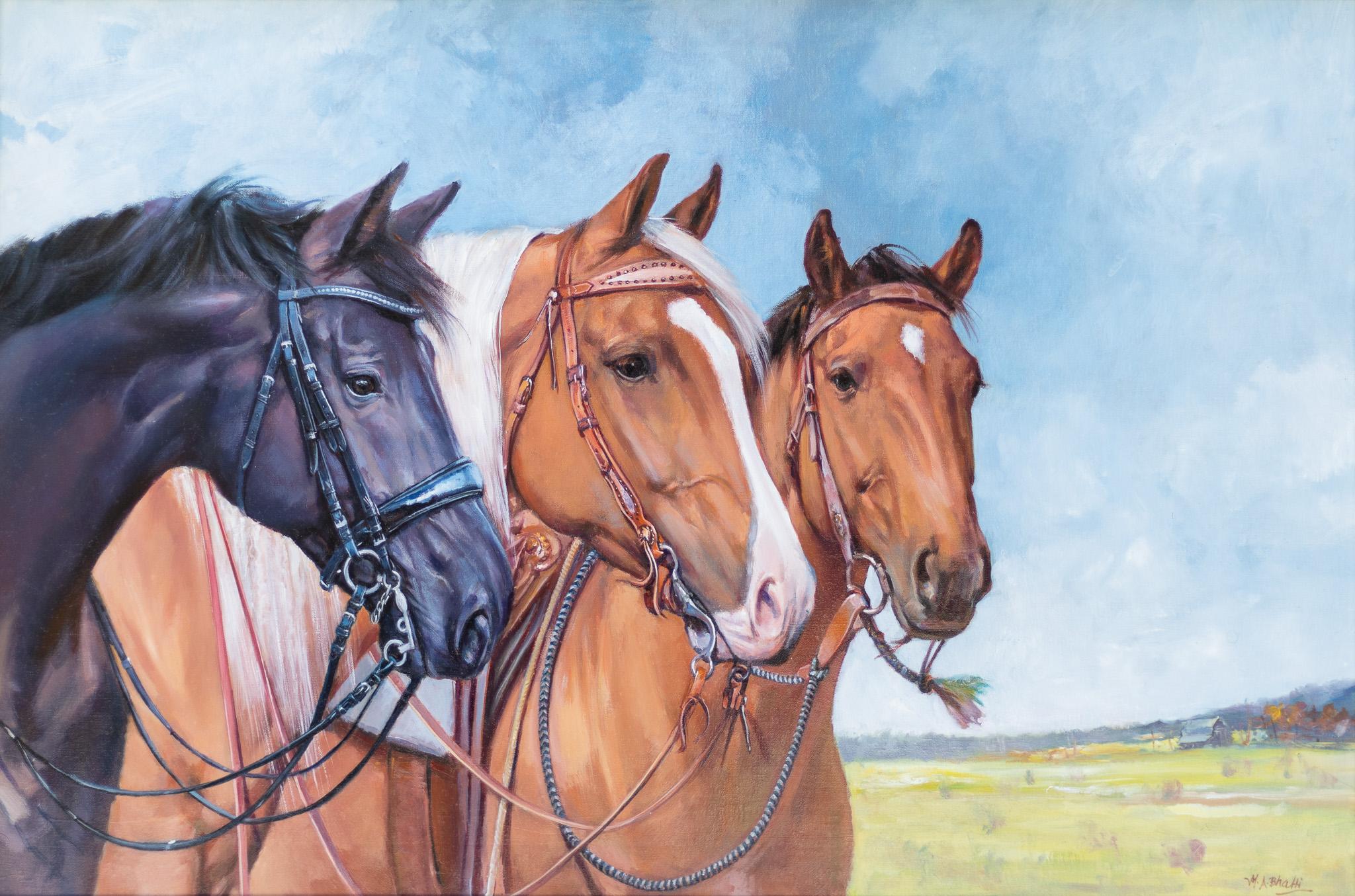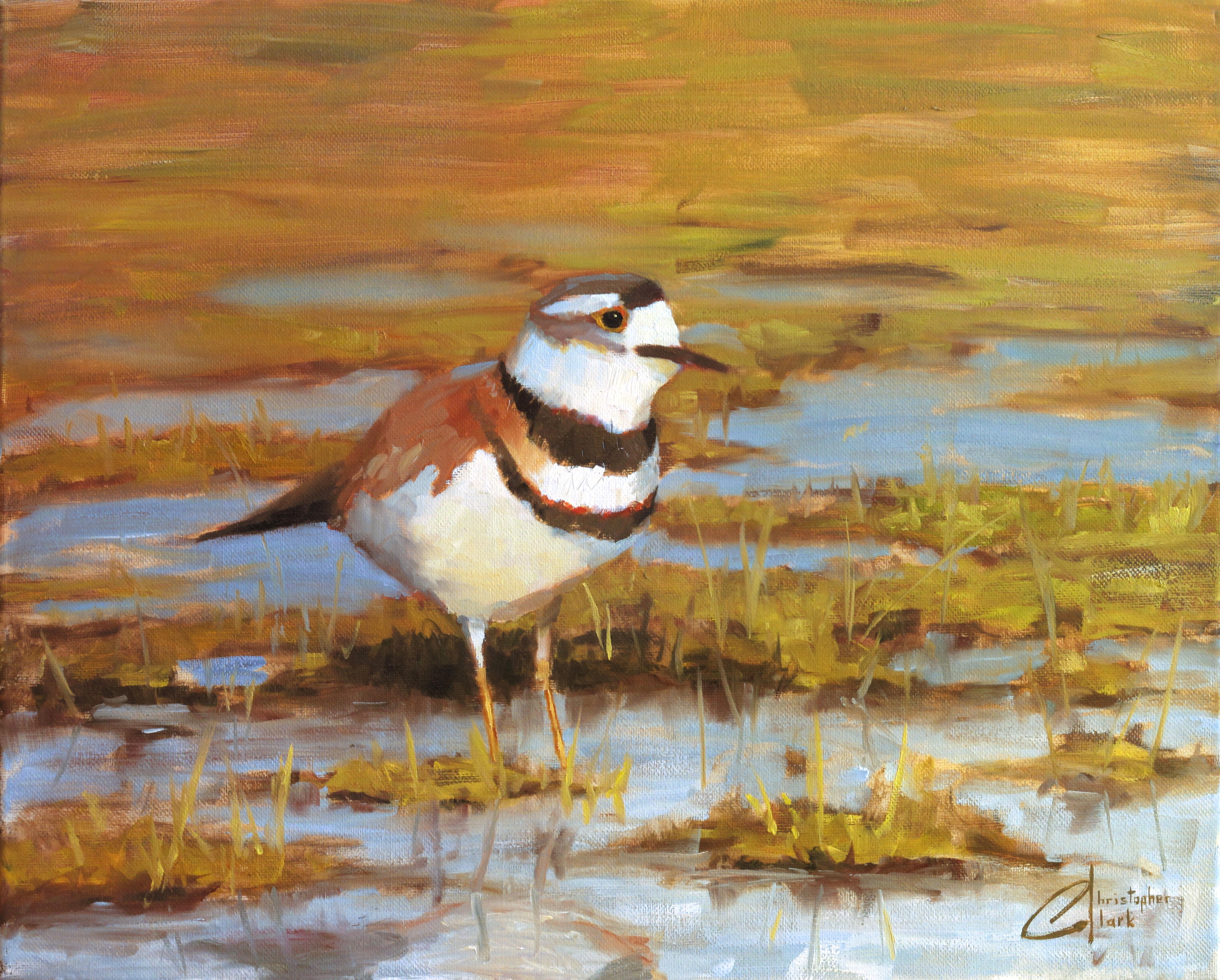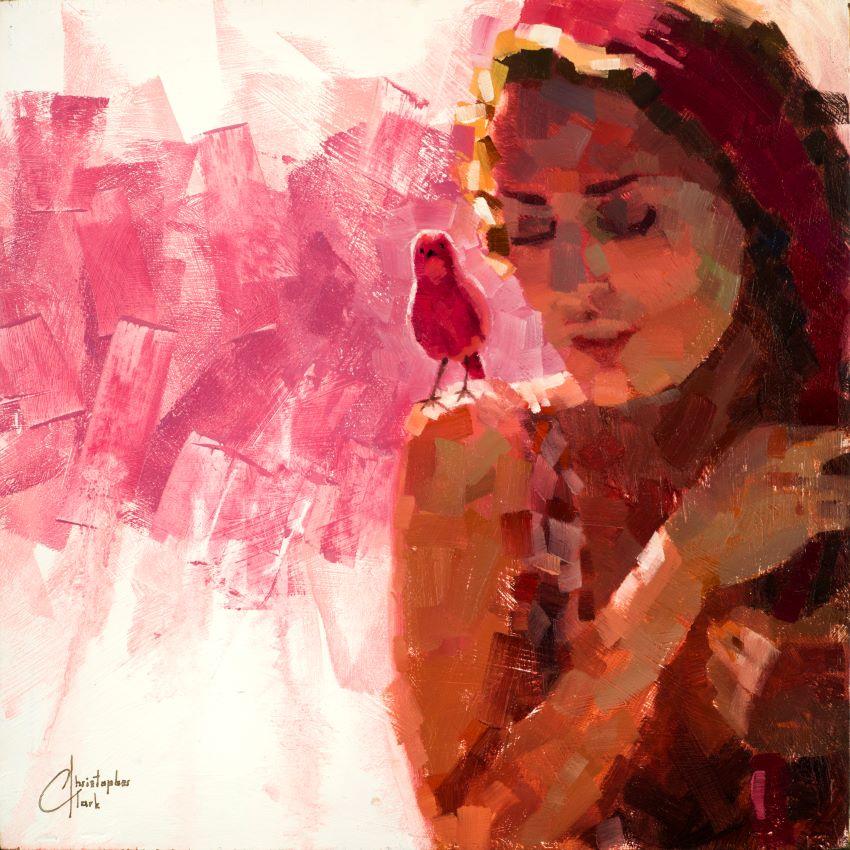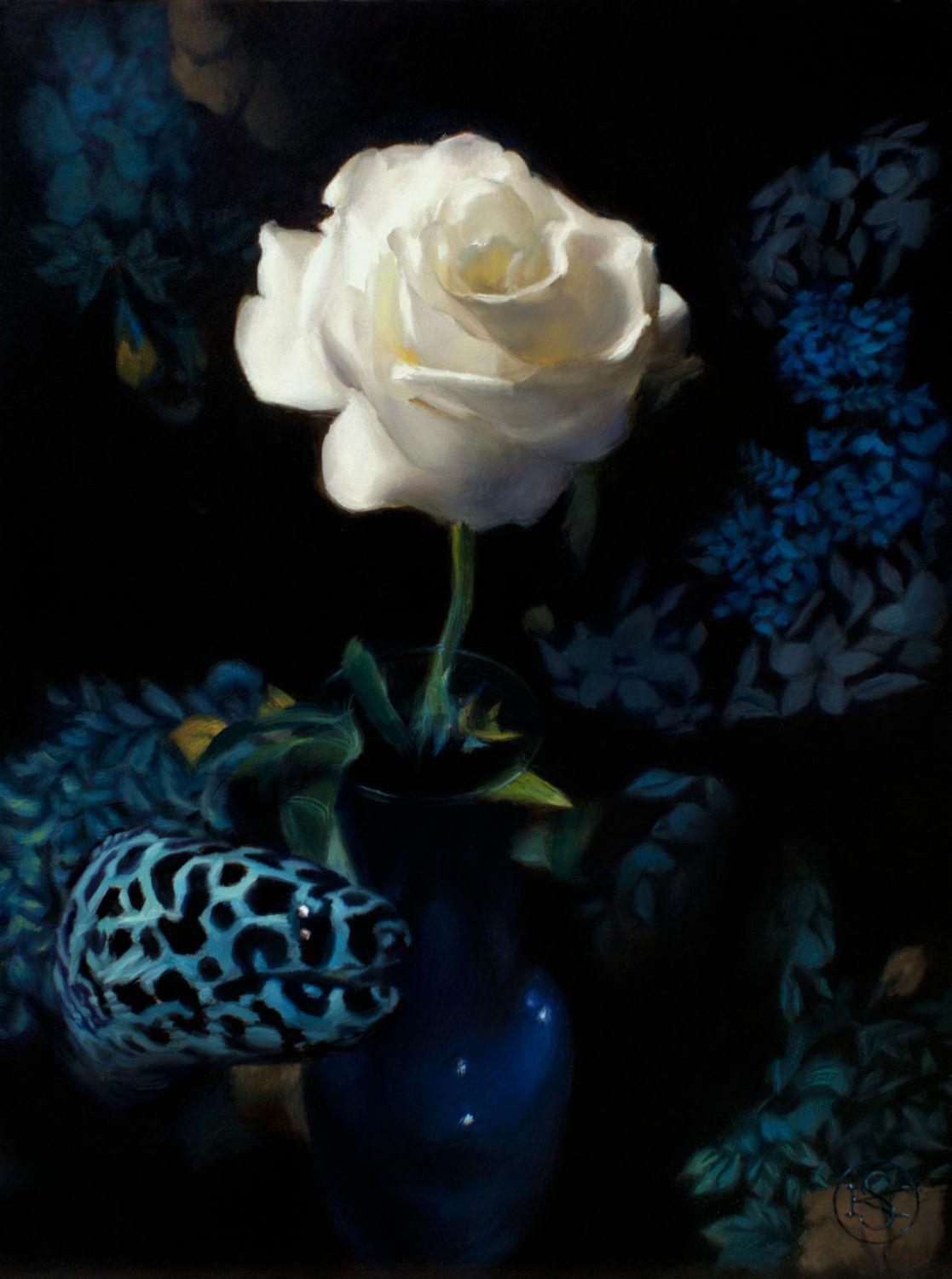Items Similar to Oil Study of Two Horses
Want more images or videos?
Request additional images or videos from the seller
1 of 6
Frederic A. BridgemanOil Study of Two Horsesc. 1880
c. 1880
About the Item
Oil Study of Two Horses
Oil on canvas, c. 1880
Unsigned
Estate stamp verso of canvas and on stretcher (see photo)
Condition: Excellent
New gilt frame aptterned after the period frame
Painting size: 4 1/8 x 8 3/8 inches
Frame size: 6 3/4 x 11 inches
Provenance:
Estate of the Artist
Jill Newhouse Gallery, New York
Eric G. Carlson Fine Prints, New York
"Frederick (sic) Arthur Bridgman relocated from Alabama to New York with his family while still a youth. He was eventually employed as an engraver with the American Bank Note Company. He began studying art in his spare time inthe Art Schools of Brooklyn and the National Academy of Design in New York. He traveled to Paris in 1866 and became a favorite student of Gérôme which lead to Bridgman's exhibition in the Paris Salon in 1868. He made France his permanent home in 1870, and spent his summers on sketching tours of Brittany. He exhibited with the National Academy of Design in 1871. He lived in Egypt in 1873; scenes from Egyptian antiquity were prominent in his work. Bridgman's talents extended to writing and music; he was a noted composer and musician. The artist died in Rouen, France, in 1928." Courtesy SAAM (Smithsonian American Art Museum)
"Frederick Arthur Bridgman was a well-known landscape and historical painter. He is most admired for his Orientalist subjects, including views of North Africa, in particular Egypt and Algeria, and his scenes from Ancient Egyptian history.
Although born in Alabama, Bridgman came from a Yankee family. After the death of his doctor father and amid the mounting tension before the Civil War, the Bridgmans returned to their native New England, settling in New York. Young Frederick showed artistic gifts and was apprenticed as an engraver to the American Banknote Company. He attended evening classes at the Brooklyn Art Association at the same time. He also studied at the National Academy of Design, where he met Harry Humphrey Moore and Thomas Hovendon. In these early years, Bridgman exhibited at the Brooklyn Art Association.
Bridgman travelled to France, where he visited Pont Aven, the artists’ colony in Brittany frequented by Paul Gauguin and Emile Bernard as well as a circle of American painters around the Philadelphian Robert Wylie (1839-1877). Bridgman also studied in Paris with Jean Léon Gérôme at the Ecole des Beaux-Arts. Bridgman made an important reputation for himself in France at the annual Paris Salons; in Britain, where he exhibited at the Royal Academy between 1871 and 1904, and in Germany, where he showed at the Grosse Berliner Kunst Ausstellung. His work was included in the American displays at the 1889 Universal Exposition held in Paris.
In 1872 Bridgman travelled to Spain and North Africa in the company of a British artist known only as ‘S’. In the winter of 1873-4 he made a second trip, visiting Egypt in the company of fellow American artist Charles Sprague Pearce. Bridgman married a young Bostonian, Florence Mott Baker; the deterioration of his wife’s health from the terrible inherited neurological disorder Huntington’s Chorea led him to return to Algiers in 1885 for a respite for them both in a warm climate. He wrote a fascinating travel narrative describing his journeys in North Africa, Winters in Algiers, published in 1888 and illustrated with woodcuts from his works.
Bridgman’s great success culminated at the Paris Salons of 1877, 1878 and 1879 with a trio of paintings portraying life in the ancient Near East: The funeral of a mummy, which was purchased by James Gordon Bennett, owner ofThe New York Herald; The diversion of an Assyrian King, and The procession of the Sacred Bull. Exhibitions of the artist’s work were held at the American Art Gallery in New York in 1881 and 1890. In 1881 Bridgman was elected a member of the National Academy of the United States. In 1889 he was given the honour of hanging five works in the Paris International Exposition. In 1907, he was made an officer of the Légion d’Honneur.
During the First World War, Bridgman suffered financial losses, in part due to gambling debts, and was forced to sell his lavish studio in the Boulevard Malherbes in Paris. Bridgman retired with his second wife, Marthe Yaeger, whom he had married three years after Florence’s death in 1901, to their house in Lyons-la-Forêt in Normandy where he remained until his death in 1928.
The work of Frederick Arthur Bridgman is represented in the Walker Art Gallery, Liverpool; the Corcoran Art Gallery, Washington DC and the Art Institute of Chicago.
Bridgman travelled to France, where he visited Pont Aven, the artists’ colony in Brittany frequented by Paul Gauguin and Emile Bernard as well as a circle of American painters around the Philadelphian Robert Wylie (1839-1877). Bridgman also studied in Paris with Jean Léon Gérôme at the Ecole des Beaux-Arts. Bridgman made an important reputation for himself in France at the annual Paris Salons; in Britain, where he exhibited at the Royal Academy between 1871 and 1904, and in Germany, where he showed at the Grosse Berliner Kunst Ausstellung. His work was included in the American displays at the 1889 Universal Exposition held in Paris."
Courtesy Artnet
- Creator:Frederic A. Bridgeman (1847 - 1928, American)
- Creation Year:c. 1880
- Dimensions:Height: 4.13 in (10.5 cm)Width: 8.38 in (21.29 cm)
- Medium:
- Movement & Style:
- Period:
- Condition:
- Gallery Location:Fairlawn, OH
- Reference Number:
About the Seller
5.0
Recognized Seller
These prestigious sellers are industry leaders and represent the highest echelon for item quality and design.
Platinum Seller
These expertly vetted sellers are 1stDibs' most experienced sellers and are rated highest by our customers.
Established in 1978
1stDibs seller since 2013
711 sales on 1stDibs
Typical response time: 1 hour
Associations
International Fine Print Dealers Association
- ShippingRetrieving quote...Ships From: Fairlawn, OH
- Return PolicyA return for this item may be initiated within 10 days of delivery.
More From This SellerView All
- Still Life with Peaches and GrapesBy D.M. RidleyLocated in Fairlawn, OHStill Life with Peaches and Grapes Oil on paper, 1890 Signed and dated lower right (see photo) Image size: 5 8 5/8 inches Frame size: 10 x 13 1/2 inches Housed in the original frame ...Category
1890s American Realist Still-life Paintings
MaterialsOil
- Study for the Mural "Westward Movement"By John Steuart CurryLocated in Fairlawn, OHStudy for the Mural "Westward Movement" Graphite, watercolor, gouache and paint on paper, 1936 Signed in pencil lower center (see photo) A study leading up to his mural Justice of th...Category
1930s American Realist Figurative Paintings
MaterialsGouache
- Study for the Mural "Westward Movement"By John Steuart CurryLocated in Fairlawn, OHStudy for the Mural "Westward Movement" Graphite, watercolor, gouache and paint on paper, 1936 Signed in pencil lower center (see photo) A study leading up to his mural Justice of th...Category
1930s American Realist Figurative Paintings
MaterialsGouache
- Horses Leaving the BarnBy Adolf DehnLocated in Fairlawn, OHHorses Leaving the Barn Watercolor on paper, 1940 Signed and dated lower left corner (see photo) Condition: Excellent Image: 14 1/2 x 21” Frame: 25” x 31” Provenance; Associated American Artists, New York (see photo of label) Mamdouha and Elmer Holmes Bobst Displayed in an original wormy chestnut frame with OP3 Acrylic. Most probably from the AAA Dehn watercolor exhibition of 1940. Vintage original framing chosen by the artist. Note: Elmer Holmes Bobst (1884–1978) was an American businessman and philanthropist who worked in the pharmaceutical industry. His wife, Mamdouha, was also well known philanthropist. Bobst was born in Lititz, Pennsylvania. He aspired to become a doctor, but instead, he taught himself pharmacology. After his wife Ethel composed his interview letter, he became manager and treasurer of the Hoffman-LaRoche Chemical Works by 1920. When Bobst retired from the company in 1944, he was one of the nation's highest paid corporate executives. In 1945 he took charge of the ailing William Warner Company (later Warner–Lambert) and he remained board chairman until his retirement. Bobst had close connections to President Dwight Eisenhower, but was also a close friend of President Richard Nixon. Note: In 1940, the year of this watercolor, Dehn and Elizabeth Timmerman visited Waterville, MN on their way to Colorado Sprint, Colorado where Dehn was to teach lithography and watercolor. This watercolor is obviously a view of the area around Waterville. Adolf Dehn, American Watercolorist and Printmaker, 1895-1968 Adolf Dehn was an artist who achieved extraordinary artistic heights, but in a very particular artistic sphere—not so much in oil painting as in watercolor and lithography. Long recognized as a master by serious print collectors, he is gradually gaining recognition as a notable and influential figure in the overall history of American art. In the 19th century, with the invention of the rotary press, which made possible enormous print runs, and the development of the popular, mass-market magazines, newspaper and magazine illustration developed into an artistic realm of its own, often surprisingly divorced from the world of museums and art exhibitions, and today remains surprisingly overlooked by most art historians. Dehn in many regards was an outgrowth of this world, although in an unusual way, since as a young man he produced most of his illustrative work not for popular magazines, such as The Saturday Evening Post, but rather for radical journals, such as The Masses or The Liberator, or artistic “little magazines” such as The Dial. This background established the foundation of his outlook, and led later to his unique and distinctive contribution to American graphic art. If there’s a distinctive quality to his work, it was his skill in introducing unusual tonal and textural effects into his work, particularly in printmaking but also in watercolor. Jackson Pollock seems to have been one of many notable artists who were influenced by his techniques. Early Years, 1895-1922 For an artist largely remembered for scenes of Vienna and Paris, Adolf Dehn’s background was a surprising one. Born in Waterville, Minnesota, on November 22, 1895, Dehn was the descendent of farmers who had emigrated from Germany and homesteaded in the region, initially in a one-room log cabin with a dirt floor. Adolf’s father, Arthur Clark Dehn, was a hunter and trapper who took pride that he had no boss but himself, and who had little use for art. Indeed, during Adolf’s boyhood the walls of his bedroom and the space under his bed were filled with the pelts of mink, muskrats and skunks that his father had killed, skinned and stretched on drying boards. It was Adolf’s mother, Emilie Haas Dehn, a faithful member of the German Lutheran Evangelical Church, who encouraged his interest in art, which became apparent early in childhood. Both parents were ardent socialists, and supporters of Eugene Debs. In many ways Dehn’s later artistic achievement was clearly a reaction against the grinding rural poverty of his childhood. After graduating from high school in 1914 at the age of 19—an age not unusual in farming communities at the time, where school attendance was often irregular—Dehn attended the Minneapolis School of Art from 1914 to 1917, whose character followed strongly reflected that of its director, Munich-trained Robert Kohler, an artistic conservative but a social radical. There Dehn joined a group of students who went on to nationally significant careers, including Wanda Gag (later author of best-selling children’s books); John Flanagan (a sculptor notable for his use of direct carving) Harry Gottlieb (a notable social realist and member of the Woodstock Art Colony), Elizabeth Olds (a printmaker and administrator for the WPA), Arnold Blanch (landscape, still-life and figure painter, and member of the Woodstock group), Lucille Lunquist, later Lucille Blanch (also a gifted painter and founder of the Woodstock art colony), and Johan Egilrud (who stayed in Minneapolis and became a journalist and poet). Adolf became particularly close to Wanda Gag (1893-1946), with whom he established an intense but platonic relationship. Two years older than he, Gag was the daughter of a Bohemian artist and decorator, Anton Gag, who had died in 1908. After her husband died, Wanda’s mother, Lizzi Gag, became a helpless invalid, so Wanda was entrusted with the task of raising and financially supporting her six younger siblings. This endowed her with toughness and an independent streak, but nonetheless, when she met Dehn, Wanda was Victorian and conventional in her artistic taste and social values. Dehn was more socially radical, and introduced her to radical ideas about politics and free love, as well as to socialist publications such as The Masses and The Appeal to Reason. Never very interested in oil painting, in Minneapolis Dehn focused on caricature and illustration--often of a humorous or politically radical character. In 1917 both Dehn and Wanda won scholarships to attend the Art Students League, and consequently, in the fall of that year both moved to New York. Dehn’s art education, however, ended in the summer of 1918, shortly after the United States entered World War I, when he was drafted to serve in the U. S. Army. Unwilling to fight, he applied for status as a conscientious objector, but was first imprisoned, then segregated in semi-imprisonment with other Pacifists, until the war ended. The abuse he suffered at this time may well explain his later withdrawal from taking political stands or making art of an overtly political nature. After his release from the army, Dehn returned to New York where he fell under the spell of the radical cartoonist Boardman Robinson and produced his first lithographs. He also finally consummated his sexual relationship with Wanda Gag. The Years in Europe: 1922-1929 In September of 1921, however, he abruptly departed for Europe, arriving in Paris and then moving on to Vienna. There in the winter of 1922 he fell in love with a Russian dancer, Mura Zipperovitch, ending his seven-year relationship with Wanda Gag. He and Mura were married in 1926. It was also in Vienna that he produced his first notable artistic work. Influenced by European artists such as Jules Pascin and Georg Grosz, Dehn began producing drawings of people in cafes, streets, and parks, which while mostly executed in his studio, were based on spontaneous life studies and have an expressive, sometimes almost childishly wandering quality of line. The mixture of sophistication and naiveté in these drawings was new to American audiences, as was the raciness of their subject matter, which often featured pleasure-seekers, prostitutes or scenes of sexual dalliance, presented with a strong element of caricature. Some of these drawings contain an element of social criticism, reminiscent of that found in the work of George Grosz, although Dehn’s work tended to focus on humorous commentary rather than savagely attacking his subjects or making a partisan political statement. Many Americans, including some who had originally been supporters of Dehn such as Boardman Robinson, were shocked by these European drawings, although George Grocz (who became a friend of the artist in this period) admired them, and recognized that Dehn could also bring a new vision to America subject matter. As he told Dehn: “You will do things in America which haven’t been done, which need to be done, which only you can do—as far at least as I know America.” A key factor in Dehn’s artistic evolution at this time was his association with Scofield Thayer...Category
1940s American Realist Landscape Drawings and Watercolors
MaterialsWatercolor
- untitled (The White Barn with Farmers and Horse)By William GrauerLocated in Fairlawn, OHuntitled (The White Barn with Farmers and Horse) Watercolor, c. 1950 Signed by the artist in ink lower right: Wm. C. Grauer Numbered in pencil verso: 152 Provenance: Estate of the Artist Gretchen Grauer Vanderhoof, the artist's daughter Condition: Excellent Image/Sheet size: 18 3/4 x 24 inches William C. Grauer (1895-1985) William C. Grauer (1895-1985) was born in Philadelphia to German immigrant parents. After attending the Philadelphia Museum School of Industrial Art, Grauer received a four year scholarship from the City of Philadelphia to pursue post graduate work. It was during this time that Grauer began working as a designer at the Decorative Stained Glass Co. in Philadelphia. Following his World War I service in France, Grauer moved to Akron, Ohio where he opened a studio in 1919 with his future brother-in-law, the architect George Evans...Category
1950s American Realist Landscape Drawings and Watercolors
MaterialsWatercolor
- Lets Find the Way #1By Darius StewardLocated in Fairlawn, OHLets Find the Way #1 Watercolor on Arches wove paper, 2021 Signed with the artist's initials lower right Signed, titled and dated in pencil verso This watercolor is related to the ar...Category
2010s American Realist Figurative Drawings and Watercolors
MaterialsWatercolor
You May Also Like
- Contemporary, American, Blue, Vintage TV, with Cat in Mid Century Mod RoomLocated in Fort Worth, TX"Contemporary, American, Blue, Vintage TV, with Cat in Mid Century Mod Room" This work is titled, "Ten past 4:00." It is 41 x 58.25" and is Unframed Oil on Canvas. $18,000, price negotiable. A well-known figure of the contemporary Fort Worth art scene, Daniel Blagg...Category
2010s American Realist Interior Paintings
MaterialsCanvas, Oil, Acrylic
- M.A. Bhatti "Gang of Three", Oil on CanvasLocated in Austin, TXA naturalistic painting portraying three horses wearing riding tack; a black, a chestnut with a white blaze, and a bay with a white star. The background features a rural landscape w...Category
2010s American Realist Animal Paintings
MaterialsCanvas, Oil
- "Looking for Breakfast", Oil PaintingBy Christopher Clark 1Located in Denver, COChristopher Clark's (US based) "Looking for Breakfast" is an original, handmade oil painting that depicts a bird perched in a flooded grassy field. Bio/artist statement: Christopher has been an artist since early childhood, when he would watch Bob Ross on PBS and mimic the famed oil painter’s art with crayons. He considers himself a self-educated artist, with his studies ranging from personal training with contemporary masters, to classical academic art technique, with much inspiration from 19th Century art and the Impressionist Movement. Christopher lived in Italy for a time, immersing himself in Italian culture and art, which continues to influence his painting. His fan base has grown considerably since his return to the US, gaining the attention of Lucasfilm and Marvel Fine Art, which both signed him as an officially licensed artist in 2016. Other clients include George Lucas, Major League Baseball, Louisville Slugger...Category
2010s American Realist Animal Paintings
MaterialsCanvas, Oil
- "Pink Bird Series - Pink", Oil PaintingBy Christopher Clark 1Located in Denver, COChristopher Clark's (US based) "Pink Bird Series - Pink" is an original, handmade oil painting that depicts a woman with a pink bird perches on her shoulde...Category
2010s American Realist Animal Paintings
MaterialsOil, Wood Panel
- Strange CatchBy Kate SammonsLocated in Denver, COEel and Floral ElementCategory
2010s American Realist Animal Paintings
MaterialsOil
- Antique American Realist Figurative Bird in Branch Blue JayLocated in Buffalo, NYAntique American realist figurative Blue Jay on a branch. Oil on board. Framed.Category
Late 19th Century American Realist Animal Paintings
MaterialsBoard, Oil
